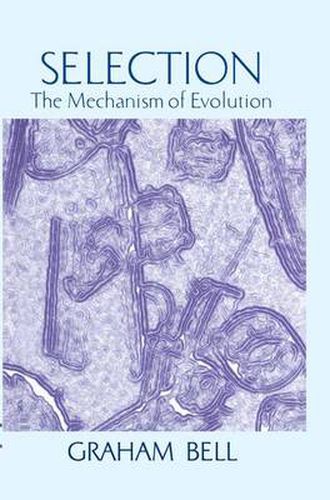Readings Newsletter
Become a Readings Member to make your shopping experience even easier.
Sign in or sign up for free!
You’re not far away from qualifying for FREE standard shipping within Australia
You’ve qualified for FREE standard shipping within Australia
The cart is loading…






This title is printed to order. This book may have been self-published. If so, we cannot guarantee the quality of the content. In the main most books will have gone through the editing process however some may not. We therefore suggest that you be aware of this before ordering this book. If in doubt check either the author or publisher’s details as we are unable to accept any returns unless they are faulty. Please contact us if you have any questions.
Thisbookhasbeenwritten tomake a pointand tofulfill a need. Thepoint is that the importance and the distinctiveness of the process of selection have been undervalued by most biologists. There is, consequently, the need for a book that describes the principles of selection in a simple but reasonably comprehensive way. Selection Is a Distinct Kind ofProcess Although we are now well into the second century of Darwinism, the theorythatDarwinand Wallaceannouncedin 1858hasnotyetmademuch progress beyond a small coterie of professional biologists. The reason is thatit isjarringlyunfamiliar toournormalexperienceofhow things come to be. Few ofus would be able to design a light bulb or a lathe, still fewer the computerand itsattendant softwarewithwhich this sentence is being written. But we all have a clear idea of what is meant by design , and we readily, too readily, transfer this notion to the natural world. A light bulb or a lathe are prefigured in the mind, and constructed according to a plan. It is entirely reasonable to assume that beetles and daisies must be constructed after the same fashion, especially because they are much morecomplicatedthananythingthathumaningenuityhassofarmanaged to devise. There is, however, a second route to complex organization, throughtheselectionofrandomvariantsthatpropagatenearlyexactcopies ofthemselves. Itisofverylittleconsequenceinourdailylives,becauseifis somuchmorelaboriousandexpensivethandeliberatedesign. However,it isanotherwayofconstructingthings. Indeed, sofarasIknow, itistheonly other way of constructing things that we have ever been able to imagine.
$9.00 standard shipping within Australia
FREE standard shipping within Australia for orders over $100.00
Express & International shipping calculated at checkout
This title is printed to order. This book may have been self-published. If so, we cannot guarantee the quality of the content. In the main most books will have gone through the editing process however some may not. We therefore suggest that you be aware of this before ordering this book. If in doubt check either the author or publisher’s details as we are unable to accept any returns unless they are faulty. Please contact us if you have any questions.
Thisbookhasbeenwritten tomake a pointand tofulfill a need. Thepoint is that the importance and the distinctiveness of the process of selection have been undervalued by most biologists. There is, consequently, the need for a book that describes the principles of selection in a simple but reasonably comprehensive way. Selection Is a Distinct Kind ofProcess Although we are now well into the second century of Darwinism, the theorythatDarwinand Wallaceannouncedin 1858hasnotyetmademuch progress beyond a small coterie of professional biologists. The reason is thatit isjarringlyunfamiliar toournormalexperienceofhow things come to be. Few ofus would be able to design a light bulb or a lathe, still fewer the computerand itsattendant softwarewithwhich this sentence is being written. But we all have a clear idea of what is meant by design , and we readily, too readily, transfer this notion to the natural world. A light bulb or a lathe are prefigured in the mind, and constructed according to a plan. It is entirely reasonable to assume that beetles and daisies must be constructed after the same fashion, especially because they are much morecomplicatedthananythingthathumaningenuityhassofarmanaged to devise. There is, however, a second route to complex organization, throughtheselectionofrandomvariantsthatpropagatenearlyexactcopies ofthemselves. Itisofverylittleconsequenceinourdailylives,becauseifis somuchmorelaboriousandexpensivethandeliberatedesign. However,it isanotherwayofconstructingthings. Indeed, sofarasIknow, itistheonly other way of constructing things that we have ever been able to imagine.